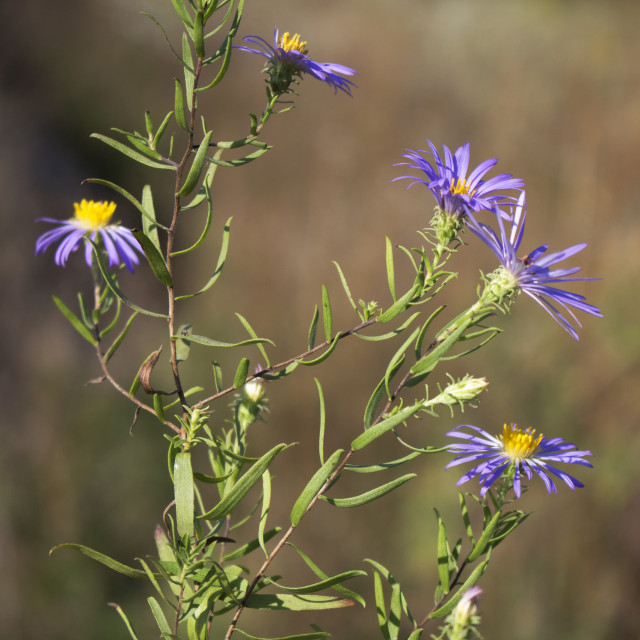COMMON NAME
Aromatic aster
SCIENTIFIC NAME
Symphyotrichum oblongifolium
ALSO KNOWN AS
Aromatic American aster, Fall aster, Wild blue aster, Shale barren aster
Plant family
Aster (Asteraceae)
Plant group
Wildflowers and Herbs
Aromatic aster is a native perennial wildflower that grows from 1–3 feet tall. The aster’s rigid stems branch out from the base, giving it a bushy appearance. The name derives from the balsam-like scent when stems are crushed or broken.
175 reports
46+
OBSERVERS
175+
OBSERVATIONS
Identification hints
Each composite flower head is subtended by bracts that resemble the leaves. Aromatic Aster can be distinguished from other Symphyotrichum species because its flowers are over 1 in across and have more than 20 colorful petals (ray florets).
Did you know?
Aromatic aster is an adaptable, easy to grow ground cover for dry, sunny locations. It creates showy mounds of blooms in fall and is excellent for native landscape gardens. Asters will grow on disturbed sites and can be used for wildlife habitat restoration. A tea made from the roots of asters has been used to treat fevers.
DISTRIBUTION IN TH U.S.
Alaska
,
Alabama
,
Colorado
,
District of Columbia
,
Iowa
,
Illinois
,
Indiana
,
Kansas
,
Kentucky
,
Maryland
,
Minnesota
,
Missouri
,
Mississippi
,
Montana
,
North Carolina
,
North Dakota
,
Nebraska
,
New Jersey
,
New Mexico
,
New York
,
Ohio
,
Oklahoma
,
Pennsylvania
,
South Dakota
,
Tennessee
,
Texas
,
Virginia
,
Wisconsin
,
West Virginia
,
Wyoming
HABITAT
Aromatic Aster can be found in dry gravel prairies, dolomite prairies, glades, and rocky bluffs along major rivers.
ATTRIBUTES
Leaves
The oblong leaves are .5-2 in. by .5 in. and have no leaf stalk (sessile), progressing singly and becoming smaller up the stem.
Flowers
Flowers of the Aromatic aster appear in fall (September-November); they are composite flowers at least 1 in. across with 20-35 purple to violet ray flowers along their edges and yellow disk flowers within the center.
Fruits
Fruits are achenes. They are slightly ribbed and with tufts of hair that aid in wind dispersal.
Bloom Time
Blooming between August and October
See Menu
Budburst is a project of the
Chicago Botanic Garden
One of the treasures of the
Forest Preserves of Cook County
Creative Commons
BY-NC-SA 4.0
- 2021 Chicago Botanic Garden. All Rights Reserved.
- Terms of Use
- Privacy Policy
- Data Sharing and Citation Policies
- 2021 Chicago Botanic Garden. All Rights Reserved.



